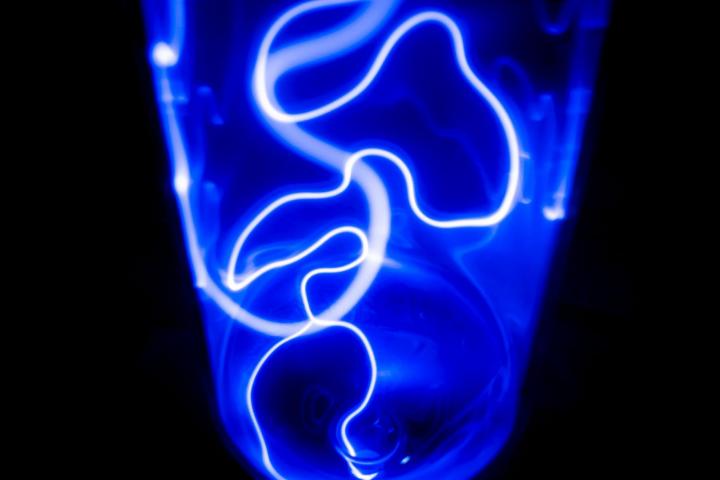
When FJFI took over the GOLEM tokamak from the Institute of Plasma Physics of the CAS 15 years ago, few had any idea how far this scientific activity would develop. In addition to the actual commissioning of the fusion facility and its opening to students, it has succeeded in building an international centre for fusion research, which has been visited by Bernard Bigot, director of the international ITER project, among others. Thanks to a unique system for remote control by mobile phone, Prince Albert II of Monaco also tried his hand at tokamak firing. This control system is now being considered by the designers at ITER as yet another mode of control.
However, the capacities of the GOLEM tokamak are no longer sufficient for the educational requirements of students from the Czech Republic and abroad. Therefore, the group at FJFI concentrated around doc. Jan Mlynář created the PlasmaLab project some time ago, which complements the experimental equipment used for thermonuclear fusion research. Thanks to the support of 23 million crowns from the European Investment and Structural Funds, the Hot Plasma and Fusion Technology Laboratory, abbreviated as PlasmaLab@CTU, could be established.
Students can expect a set of vacuum chambers, the possibility of working with five different gases, a linear magnetic trap, a resonant cavity or microwave interferometry and a number of high-end instruments for optical measurements. "PlasmaLab@CTU will offer students the opportunity to gain experience in the measurement and diagnostics of plasma, one of the key disciplines in the development of a thermonuclear power plant," explains Dr Jana Brotánková from the department of physics and continues: “It is not possible to insert a simple thermometer into an environment with a temperature of several hundred million degrees Celsius; this requires sophisticated measurement methods. Students will work with electrostatic probes and magnetic sensors, for example." Electrostatic probes measure the plasma discharge in a vacuum receiver. The apparatus also serves as a test bed for any innovative designs proposed by the students themselves. There is also a task for them to sharpen their skills in working with magnetic sensors; this is an important step for working with feedback to make the plasma stable, one of the most basic requirements for a custom thermonuclear power plant, but also one of the most difficult to achieve.
The highlight of the PlasmaLab@CTU is the 3D microscope, the highest class of optical microscopy, which goes to the very edge of visible light. In particular, the microscope is used in materials research on one of the most important topics in fusion: monitoring the effects of the interaction of the hot plasma with the surface of the vessel. This facility allows to address one of the main requirements for the functionality of a fusion power plant, namely to maintain the longest possible lifetime of the reactor vessel.
"PlasmaLab@CTU will be used mainly by FJFI students in the new PhD programme Physics of High Temperature Plasmas and Thermonuclear Fusion, which we have established together with the University of Ghent in Belgium, but it is also open to our undergraduate students, including students of the European joint Master's programme FUSION-EP, or for interdisciplinary research in the field of optics or materials engineering, for example. In addition, we will be glad if students from other universities in the Czech Republic or abroad will continue to be interested in PlasmaLab@CTU, which includes the GOLEM tokamak led by Dr. Vojtěch Svoboda. I believe that everyone will appreciate this investment in the same way as they appreciate the GOLEM tokamak," adds doc. Jan Mlynář.
The opening ceremony of PlasmaLab@CTU will be held at Břehová 7 street, Prague 1 on Thursday 17 February at 17:00. On the occasion of this event, leading personalities in the field of fusion will gather at FJFI. In addition, young scientists and students in this field are also invited, as there is a need to develop contacts and build new collaborations across generations. In addition to the tour of the PlasmaLab@CTU premises, short lectures are prepared for all visitors with a look back at the past, as well as the future of fusion in the Czech Republic and the world.
Contact person: Jan Kadeřábek